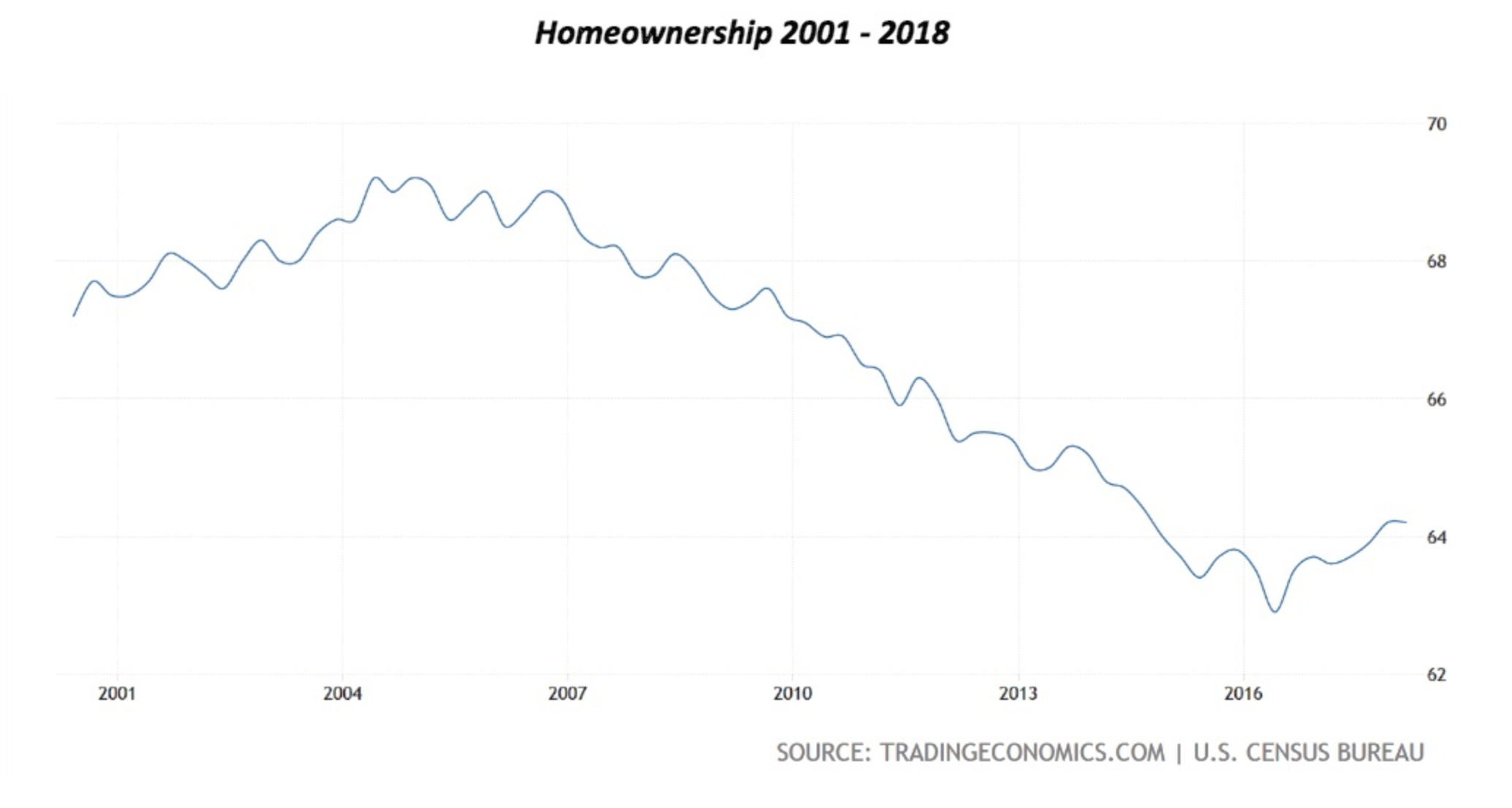Current Demographic Trends Favor Apartments
One of the strengths of multifamily as an asset class is the large and growing demand for apartments. This demand is fundamentally based on demographics. The two largest population groups are the baby boomers and millennials, both of whom make up a large percentage of the current renter population.
THE MILLENNIAL GENERATION
Millennials are the largest population group, and 74% of them rent rather than own their homes. There are numerous reasons for their propensity to rent. Millennials came of age during or following the Great Recession (2007 – 2009). They had higher student loan debt than previous generations, and the labor market was unfavorable at this time. Job prospects were more difficult, and lending criteria for home mortgages became more stringent. These factors made it difficult to save up the down payment necessary to purchase a home, and millennial homeownership has lagged previous generations. In addition, many millennials choose to rent as a lifestyle choice. They have postponed getting married and starting families as compared to previous generations. They are also the most likely generation to switch jobs, which may impact lifestyle decisions such as homeownership.
THE BABY BOOMER GENERATION
Homeownership declines after the age of 60, and this has contributed to baby boomers becoming the fastest-growing group of renters. The number of renters in their early 60s increased by 84 percent between 2006 and 2016 according to a Harvard study of census data. Once baby boomers become empty nesters and downsize, they often start renting and tend to remain renters for the rest of their lives. They no longer have the need for the expense of a family home. Maintaining a home also requires an investment of time and personal energy which is more difficult as one age. Simple tasks such as changing a lightbulb over the stairs can become more challenging or even burdensome. These renters can enjoy the amenities and convenience of apartment living without the personal maintenance of a household. Baby boomers and millennials alike are becoming renters and flocking to urban and suburban areas.
These demographic trends have contributed to the decline in homeownership and the rise in renter households over the past two decades. As shown below, homeownership has declined since 2004.
Interestingly, the number of renters has increased over the same time. From 2006 – 2016, the U.S. population increased by 23.7 million people, and the growth of renters vs. homeowners was vastly different. In that time period, the number of renters increased by more than 23 million, while the number of homeowners increased by less than 700K. Moreover, the demand for apartments is predicted to be strong for many years to come based upon these demographic data. According to the National Multifamily Housing Council, the country will see a demand for 4.6 million more apartment units by 2030.
The overall demographic trend for the foreseeable future is a disproportionate increase in the number of renter households compared to homeowners, creating a strong demand for multifamily real estate. The savvy investors are likely to take advantage of these demographic trends in her portfolio. If you want to learn more about multifamily real estate, don’t hesitate to reach out. Just send us an email and we would be happy to connect.



